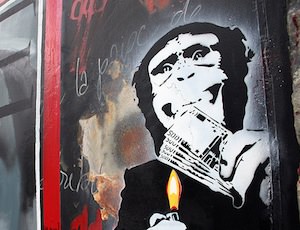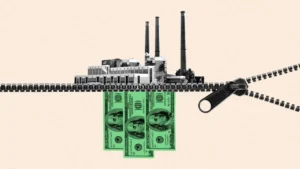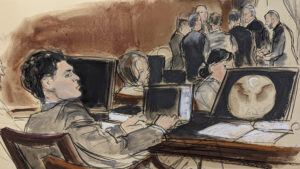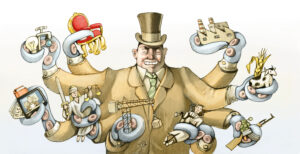Money’s Triumph Over Art
Like the natural environment, the long decay of the established art world is picking up pace as the super rich shamelessly spend $60 million, $100 million, $140 million on works declared desirable by critics operating more as pimps for the wealthy than loving and enthusiastic guides, critic Jed Perl writes at The New Republic.
Like the natural environment, the long decay of the established art world is picking up pace as the super rich shamelessly spend $60 million, $100 million, $140 million on works declared desirable by critics operating more as pimps for the wealthy than loving and enthusiastic guides, critic Jed Perl writes Wednesday at The New Republic.
“Among the most revolting sports favored by the super-rich is the devaluation of any reasonable sense of value,” laments Perl, whose recurring theme in recent years has been the steadfast and suicidal refusal of critics, academics and students to explore what is good and bad and why in works created in the present and recent past; suicidal because aesthetics, as a standard of value, has been replaced by money. “At Christie’s and Sotheby’s some of the wealthiest members of society, the people who can’t believe in anything until it’s been monetized, are trashing one of our last hopes for transcendence.”
This abandonment of a discussion of artistic value apart from money has given art’s fate to the rich, Perl writes. And the abdication mirrors society’s other losses. “The art world has become a fantasy object for the professional classes—and that’s a troubling turn of events, because art must be experienced concretely, immediately. Since the democratization of culture began in the nineteenth century, a rising middle class has seen in the arts a dazzling enrichment and complication of its own ideas and ideals—of its belief in fairness, seriousness, standards, transcendence. And now, with the middle class in disarray, art is no longer embraced as anything close to an ideal. Art is just another hope to be abandoned, along with the hope that your children might do better than you’ve done. In place of art as an ideal we have art as an idol. (Or art as an educational tool, by way of the numbingly utilitarian logic that if you learn to play Bach you will improve your math skills.) No wonder everybody is following not the art but the sky-high prices at the auction houses—and the parties at Art Basel Miami Beach, where the same dealers and collectors are gathering this week to play more or less the same games.”
The critic-as-pimp claim is illustrated in the consulting job John Elderfield, the Museum of Modern Art’s chief curator emeritus of painting and sculpture, took with Manhattan’s Gagosian Gallery. “Whatever happened to the firewall that separated the long-term cultural thinking of the museums from the short-term commercial gains of the galleries?” Perl asks. In his new role as adviser to the rich, Elderfield has perplexingly contradicted the opinion held by “many of the finest minds of his own generation” in his assessment of works by the late Willem de Kooning. “The same thoughtful people would be deeply troubled by Elderfield’s willingness to turn MoMA’s prestige into Larry Gagosian’s financial advantage,” Perl writes.
The message is clear, Perl concludes. “The cash registers are ringing and that’s the only music anybody any longer really hears in the art world. … One thing is certain. … In the art world as it is now, it’s difficult to convince most people that anything matters more than that.”
— Posted by Alexander Reed Kelly.
Your support matters…Independent journalism is under threat and overshadowed by heavily funded mainstream media.
You can help level the playing field. Become a member.
Your tax-deductible contribution keeps us digging beneath the headlines to give you thought-provoking, investigative reporting and analysis that unearths what's really happening- without compromise.
Give today to support our courageous, independent journalists.






You need to be a supporter to comment.
There are currently no responses to this article.
Be the first to respond.